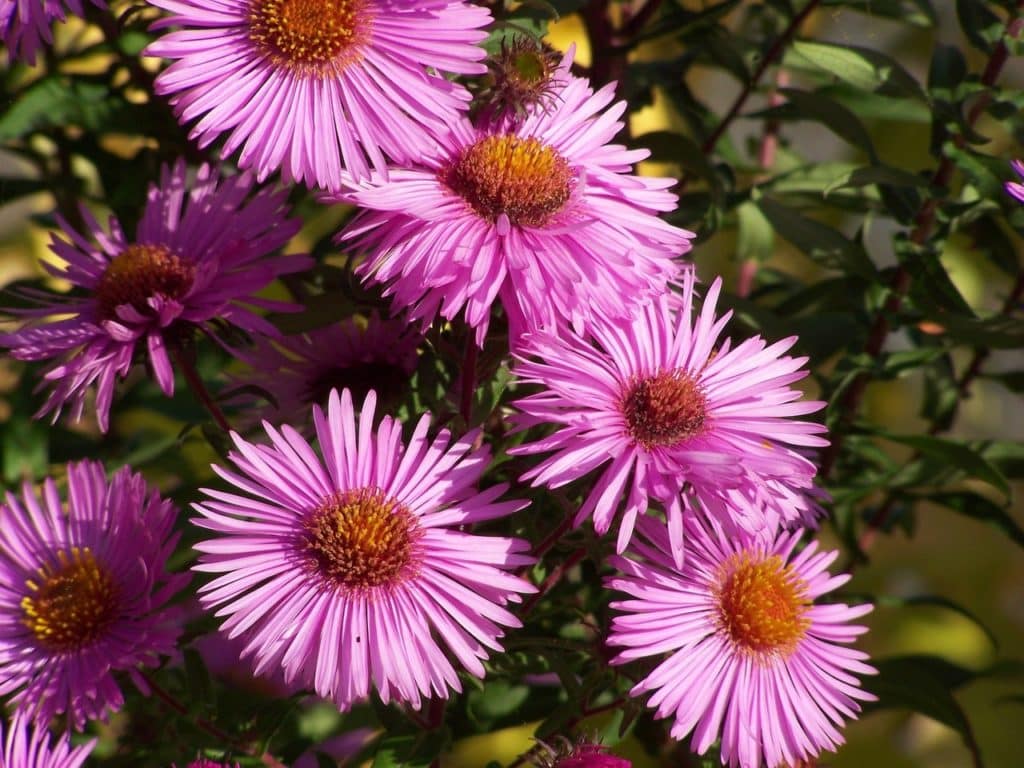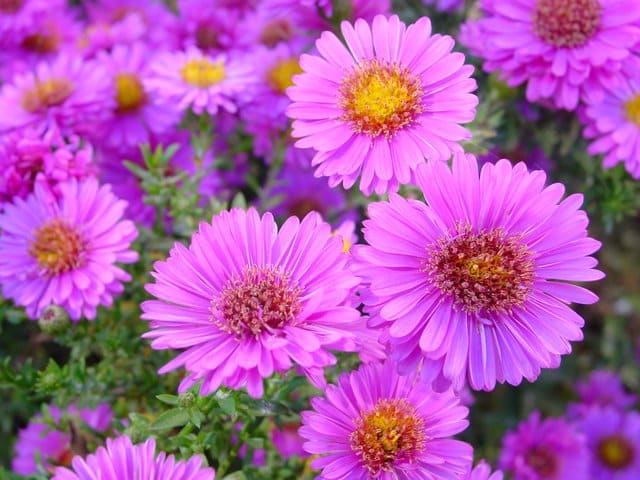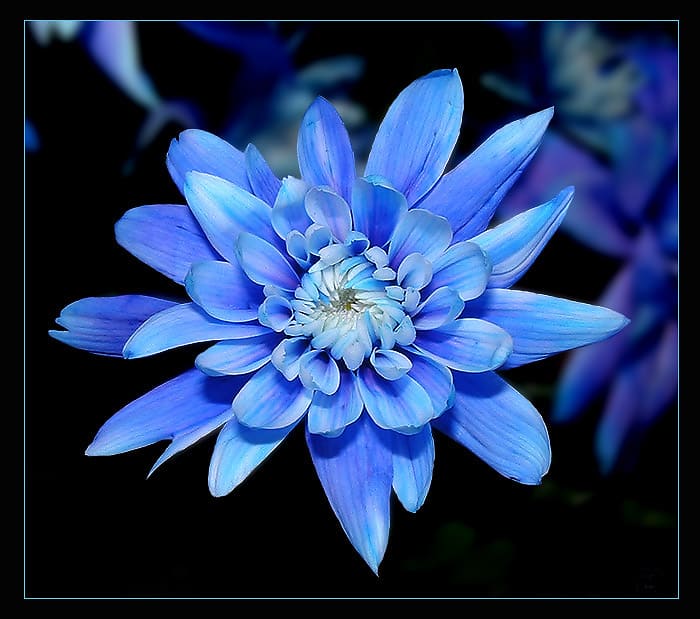Don’t let the spent flower blooms during these dog days of summer have you thinking that the garden is done for the season. Plant asters in your late summer garden and you’ll enjoy a colorful floral display well into fall. Many asters will flower until frost.
Consisting of daisy-like blooms, asters come in a wide range of striking colors, including blue, white, pink, yellow, orange and lavender. In addition to lighting up the garden, asters, which are perennials, provide a nectar source for wildlife, including bees and other insects, and they are host plants for butterflies and moths. Once asters go to seed, they also provide birds much needed nourishment.

(Andrea Kratzenberg-FreeImages.com)
To have luck growing asters in your late summer and fall garden, keep the following cultivation tips in mind.
Provide proper lighting. Most asters require bright light to grow well. Plant in an area of the garden that receives a minimum of six hours of sun a day. Some asters require partial shade. For those species, plant in an area that receives morning sun and afternoon shade or dappled sunlight throughout the day.
Amend the soil. Though asters will grow in heavier soils, such as clay, they do best if the soil is amended, so that the drainage is good. Add homemade or bagged compost to the planting area prior to planting.

(Ann Mulder/FreeImages.com)
Water until established. Asters are fairly drought tolerant, once established. Water them regularly for the first month until new growth appears and then taper off on watering. For established asters, water weekly or twice weekly in the absence of rainfall during the growing season.
Feed yearly. Asters require very little in the way of fertilizer. If you over-feed them, asters will create excessive foliage and no blooms. When planting, add an organic starter fertilizer to the soil. Thereafter, fertilize in the spring with an organic fertilizer designed for flowering plants.
 (Susie Uebler/FreeImages.com)
(Susie Uebler/FreeImages.com)Cut back in spring. In order to experience an abundant aster show in the late summer and fall months, cut the plants back in spring about a month after they’ve started growing. Prune them back by 50 percent with garden shears. This “haircut” will cause them to branch out and grow bushier, as opposed to becoming tall and unwieldy. Un-pruned asters are more likely to require staking when they bloom.
Cutting asters back also ensures that they get adequate air-circulation, which prevents them from succumbing to rust and mildew diseases.
Divide every three years. Asters eventually grow into large clumps and need to be divided every three years or so. Divide in early spring by digging up the plant clumps and cutting them into separate plants. Replant, spacing 1 to 3 feet apart.
Julie Bawden-Davis is a garden writer and master gardener, who since 1985 has written for publications such as Organic Gardening, Wildflower, Better Homes and Gardens and The Los Angeles Times. She is the author of seven books, including Reader’s Digest Flower Gardening, Fairy Gardening, The Strawberry Story, and Indoor Gardening the Organic Way, and is the founder of HealthyHouseplants.com.

